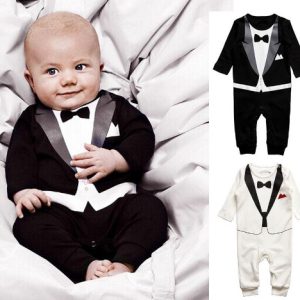
Choosing clothes for babies is so much fun that we often get caught up in how cute they are rather than what they'll be comfortable in. However, when we think about how to dress a child, it is important to think about his development.
Prioritize freedom of movement and comfort
If your child reaches for them at the sight of toys, it is important that his hand is not constrained by heavy clothing.
Choose comfortable, soft fabrics and stretchy materials such as jersey (also known as T-shirt material). And choose sizes that don't sink into the fabric and cut off circulation. Don't forget about the waist, which fits tightly to the stomach. Light clothing, especially around the arms and legs, allows your baby to move and explore the world around him.
Choose shirts or T-shirts with loose collars. Comfortable and easy-to-use clothing promotes your child's mobility and independence. It also makes toilet training easier because the elastic waistbands make it easier to pull the pants on and off.
Free your feet
Keep your baby's feet bare and free whenever possible. This allows baby to receive more sensation through the feet (wood floors have a different feel than shag carpet), which are the nerve center of the body.
Bare feet provide traction indoors where socks can be slippery. Mittens and socks are good for warmth, but they prevent your baby from exploring the world around him.
Clothes for crawling children

If your baby crawls, shorts are preferable to pants as they allow your baby to move more freely and become familiar with different textures of the floor or carpet. Try to avoid bloomers and wide, long pants, as they can cause difficulty walking and crawling. And, no matter how cute they are, save jeans for later - they can be restrictive due to their fabric.
Blouses are also great when your baby is learning to crawl because they don't bunch up and interfere with his movement. When your baby learns to crawl and begins to stand, you can move on to pants and shirts.
Remove shortcuts
Remove tags from all clothing or look for clothing with printed, permanent tags. Labels can be itchy, irritate your child's skin, or distract him from observing and learning as he moves through the environment. Moreover, sometimes they prick and cause the most unpleasant sensations.
Choose breathable materials
Remember, when your baby was in the womb without clothes, he used his body as a reference point, and the temperature around him remained constant.But as soon as it left your body, they put on a new, foreign material - clothes! It is important that clothing, especially for newborns, allows the baby to maintain the frame of reference that he had in the womb, is breathable, flexible and fits his shape enough so that he feels natural exploring the environment in it.
Clothes are an important aspect of a one-year-old boy's development because they are critical to encouraging your baby's independence. And the smallest changes can make a big difference when it comes to giving your child the opportunity to participate in the dressing process.
Try to figure out what kind of clothes your baby likes, you may see him reaching out to try to help you, or you may notice that your baby sleeps more comfortably in cotton or jersey. In any case, give preference to hypoallergenic materials.


 0
0





